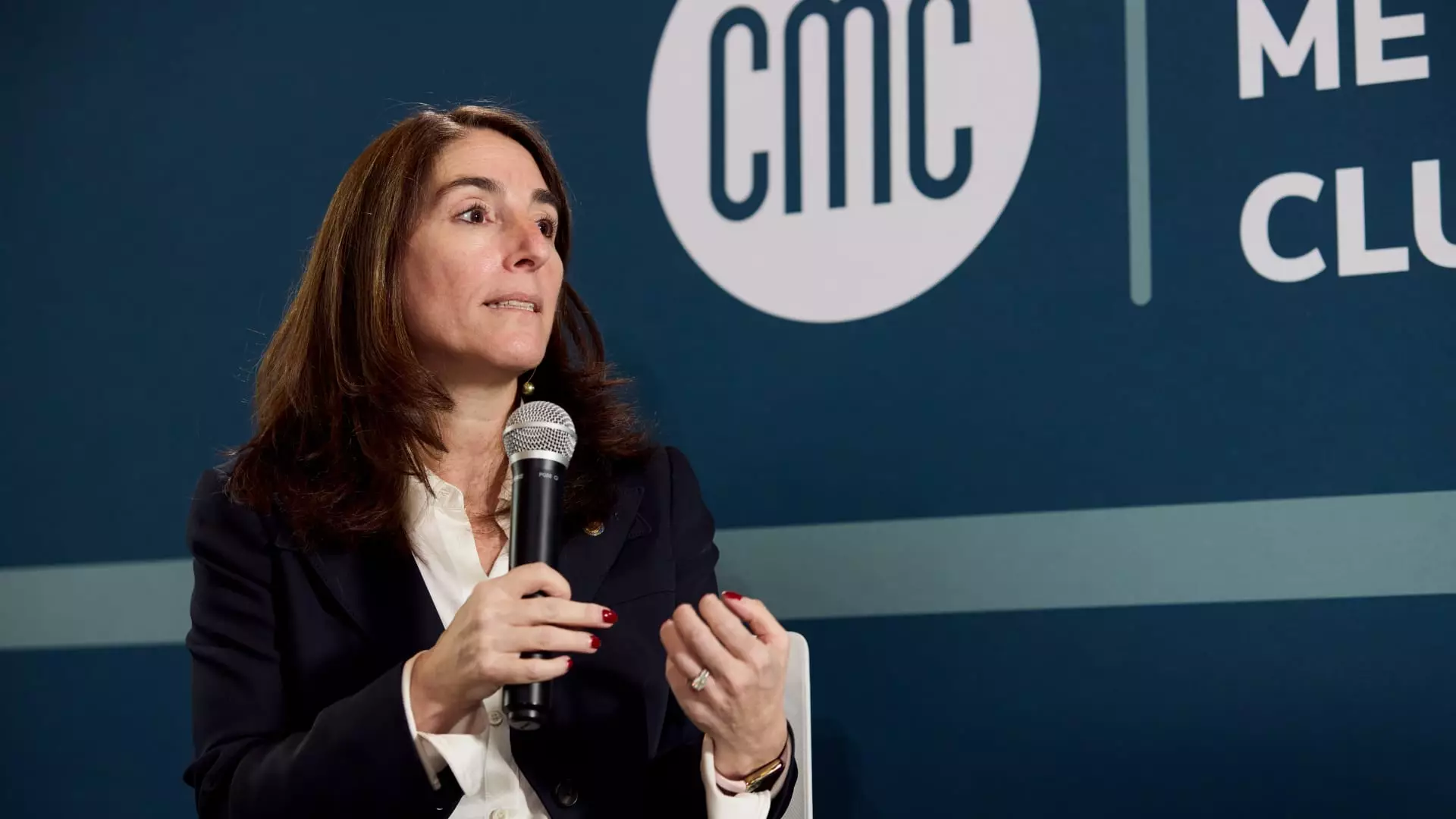In a recent discussion, Cleveland Federal Reserve President Beth Hammack emphasized the necessity for a patient approach as policymakers evaluate the ramifications of tariffs on inflation and economic growth. This statement marks her first significant public address since she officially took charge of the Federal Reserve district in August 2024. Hammack’s insights reflect a broader sentiment among economic leaders regarding the complexity and ambiguity surrounding current market conditions. Instead of rushing into decisions, she advocates for a diligent analysis of “hard data,” asserting that it’s vital for the Federal Reserve to carefully assess the implications of its decisions without succumbing to the pressures of immediate market reactions.
Hammack’s stance resonates profoundly as the Federal Reserve navigates an era marked by persistent uncertainty. The backdrop of potential conflicts arising from tariffs—initiated during former President Donald Trump’s administration—creates intricate challenges for monetary policy. In her interview with CNBC’s “Squawk Box,” Hammack articulated her concern about the risks of overreacting, aligning her views with those of other Fed officials who have expressed reservations about how tariffs might undermine the Fed’s dual mandate of ensuring price stability and maximizing employment.
Understanding the Dual Mandate Dilemma
One of Hammack’s critical insights is the potential conflict between the two sides of the Federal Reserve’s mandate. As she pointed out, the possibility of facing higher inflation while contending with lower employment poses a profound challenge. This duality complicates decision-making, compelling the Fed not just to respond to immediate economic signals but to anticipate longer-term impacts on households and businesses. Hammack’s articulation of this tension serves as a poignant reminder of the multifaceted nature of economic governance, especially during times of turbulence.
Market expectations suggest that the Federal Reserve may choose to maintain current interest rates during its meetings in early May and potentially initiate rate cuts thereafter. However, Hammack’s vote this year is impotent since she will only participate in rate-setting decisions in 2026. As she pointedly stated, “If we have convincing data by June, then I think you’ll see the committee move.” This projection underscores her belief in the importance of data-driven decisions over speculative or reactionary moves fueled by transient market volatility.
The Market Reaction and Real Economic Impact
Hammack’s previous experience at Goldman Sachs lends her a unique perspective as she reflects on the encumbrances placed on economic actors by fluctuating market conditions. While she remains attentive to how market movements can reflect broader economic realities, Hammack asserts that the Federal Reserve’s priority should lie with the real economy rather than transient market performance. “Our job is not to focus on what the markets are doing. Our job is to focus on how that’s going to impact households and businesses,” she declared.
This perspective urges a shift away from reactive monetary policy responses that may cater to short-term market fluctuations. Instead, it highlights the significance of fostering a stable economic environment that supports long-term growth and sustainability. In this light, Hammack’s insistence on reviewing hard economic data such as unemployment rates and inflation figures is not merely academic; it underscores the need for grounded decision-making in the face of uncertainty.
Economic Uncertainty and Business Sentiment
Economic uncertainties have invariably led to heightened concerns among businesses. Hammack addressed this sentiment, noting that while hard data reflects resilience, soft indicators—like business sentiment surveys—demonstrate an overarching apprehension that hampers investment and hiring decisions. As businesses grapple with finding clarity amid the fluctuating economic landscape, many are pausing major investments and reevaluating their hiring plans. This cautious approach emphasizes the significant psychological impact of uncertainty on economic actors, showcasing the need for policy coherence that can restore confidence.
Hammack’s observation captures a vital aspect of economic policymaking: it is not enough to respond to numbers on a spreadsheet. Instead, there exists a critical need for policymakers to forge genuine connections with the fabric of the economy that affects everyday lives. As Hammack herself poignantly stated, “I wish I had a crystal ball. We don’t have one.” This acknowledgment underscores her commitment to navigating a complex economic climate with pragmatism and patience, traits that will undoubtedly shape her tenure at the Federal Reserve and influence the broader economic landscape for years to come.

